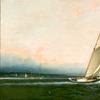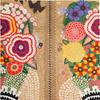CHRISTIE’S NEW YORK PRESENTS THE SALE OF INDIAN AND SOUTHEAST ASIAN ART IN MARCH
- NEW YORK, New York
- /
- February 27, 2013
On March 19, Christie’s saleroom will be devoted to the classical works of Indian and Southeast Asian Art. Christie’s will offer an extensive selection of over 200 lots of sculpture, paintings, ritual objects, and works of art from India, Tibet, Nepal and Southeast Asia. Highlights include a Tibetan gilt bronze figure of a bodhisattva, a Gandharan bronze figure of Buddha from the 6th/7th century, and a South Indian Chola bronze figure of Vinadhara Dakshinamurti.
The Tibetan gilt bronze figure of a bodhisattva from the 9th/10th century comes from a private European Collection (estimate on request). Standing nearly four feet tall, this large and resplendent figure of a bodhisattva is one of the most impressive early sculptures in bronze to be seen outside of Tibet. The present work represents a unique moment in stylistic development, evolving from and engaging with the nearby artistic traditions of Northeastern India and Nepal while working with the existing Tibetan style of sculpture. Certain aspects of the work also demonstrate a familiarity with Nepalese sculpture, specifically the treatment of the headdress.
Also among the highlights of the sale is a bronze figure of Shiva Vinadhara Dakshinamurti, one of four types of supreme teachers of ultimate awareness, understanding, and knowledge (estimate: $400,000-600,000). Executed during the Chola period in Southern India, this representation of Vinadhara bears close resemblance to that of Tripuravijaya, the vanquisher of the triple-city of demons, based on the iconographic convergence between the two forms. A consignment of the Dharma Collection, this bronze has an exceptional pedigree, having been exhibited at several notable institutions, including the Art Institute of Chicago, the Cleveland Museum of Art, and the Museum of Fine Arts in Boston.
A magnificent figure of Buddha is one of the largest of its kind, at over one foot in height, belonging to an extremely rare type of bronze cast in the regions of ancient Gandhara and the Swat Valley in the 5th through 7th centuries (estimate: $500,000-700,000). Also contributing to the work’s importance is that it still carries its backplate, a combined nimbus and aureole with radiating spokes with an extremely rare motif of flying geese. As the goose is a traditional Indian symbol for the soul, it represents the notion of reincarnation, and is thus an appropriate visual symbol for the Buddhist pursuit of transformation.




10270x400_c.jpg)







_-Closing-the-Distance_100x100_c.jpg)









